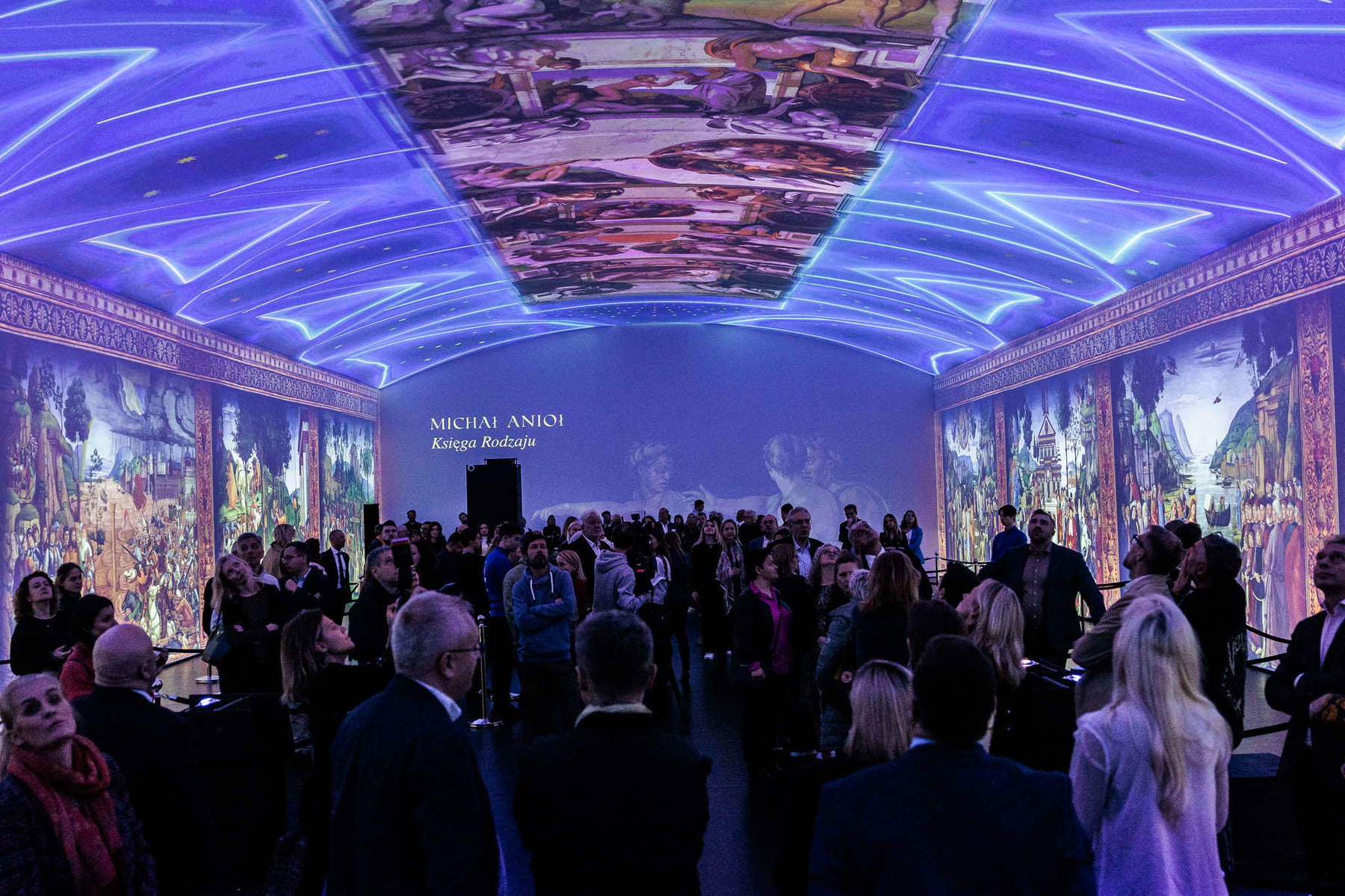An immersive, digital version of the Sistine Chapel comes to life in Poland
An immersive digital version of the Sistine Chapel. If frescoes by Michelangelo, Botticelli and company cannot travel, then they are recreated with modern technology and exported. It happens in Poland, where last November 18 the project The Sistine Chapel. Heritage, which reproduces, in an immersive environment, the seat of conclaves, the world’s most famous chapel: the venue is one of the most unusual, because the project takes shape in the spaces of the PGE Narodowy, or the National Stadium in Warsaw, the usual home of the Polish national team’s soccer matches and Legia Warsaw, one of the country’s most titled teams, as well as the scene of major international matches (Italian fans remember it for the semifinal of the 2012 European Championship, won by Italy 2-1 against Germany).
The project bears the signature of the Scripta Maneant company and the Vatican Museums, and is the first immersive exhibition of the Sistine Chapel in its entirety, created through innovative patented technologies and thanks to the collaboration of the Vatican Museums, Scripta Maneant and Dom Emisyjny Manuscriptum, a publishing house specializing in the reproduction of ancient manuscripts. The exhibition promises to put visitors in a position to admire every detail of the frescoes by the Renaissance masters as if they were standing just inches from them. A show that will reproduce every element of the Chapel for the total duration of 90 minutes. “Those who have not seen the Sistine Chapel cannot imagine what one man, Michelangelo, is capable of,” wrote the famous German creator Johann Wolfgang Goethe. And the goal of the project is to introduce as many people as possible to the Renaissance masterpiece. “Until now,” the organizers say with a little ambition, “those who wanted to witness it had to travel to Rome to catch a glimpse, just for 15 minutes, of the Last Judgment, the Creation of Adam or one of the 16 biblical genre scenes painted there. With the advancement of technology and the development of moving images, the Sistine Chapel has also brought its wonders into the world of multisensory experiences. Today it will fascinate not only admirers of sacred art but also ordinary viewers, including young people whose attention is often captured by moving images.”
Poland is the first country to host the project: after Warsaw, the exhibition will move to Krakow and Gdansk, but stops in Europe and around the world are also planned in the future. The entire exhibition will occupy an area of nearly 2,000 square meters. The images will be displayed not only on the walls but also on the ceiling of the exhibition space in order to reproduce as faithfully as possible even the arrangement of the scenes. The exhibition will be multilingual and will appeal to people from different cultures, backgrounds and countries. The project also includes an educational component that presents the uniqueness of Rome’s treasure and Michelangelo’s creative process. The project is sponsored by the Vatican Museums.
 |
| An immersive, digital version of the Sistine Chapel comes to life in Poland |
Warning: the translation into English of the original Italian article was created using automatic tools. We undertake to review all articles, but we do not guarantee the total absence of inaccuracies in the translation due to the program. You can find the original by clicking on the ITA button. If you find any mistake,please contact us.






























